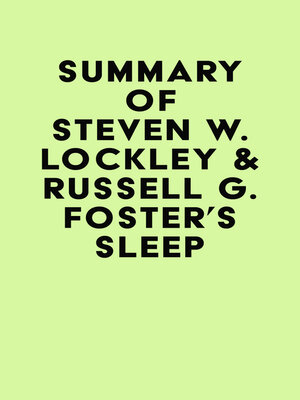
Sign up to save your library
With an OverDrive account, you can save your favorite libraries for at-a-glance information about availability. Find out more about OverDrive accounts.
Find this title in Libby, the library reading app by OverDrive.



Search for a digital library with this title
Title found at these libraries:
| Loading... |
Please note: This is a companion version & not the original book. Book Preview:
#1 Our treatment of sleep today is brutish. We, on average, sleep about 7 hours a night, with 5 percent sleeping fewer than 5 hours and 6 percent sleeping more than 9 hours. By contrast, some historical reports suggest that we slept significantly longer in the past.
#2 We sleep less now than we did at any other point in history. This is likely due to the culture of long work hours, shift work, long commutes, global communication across multiple time zones, and freedom from many economic and social constraints.
#3 Sleep has been studied for at least 2,500 years, and the Greeks philosophers Alcmaeon, Hippocrates, and Aristotle all put forward theories on the causes and functions of sleep. The idea that the brain was central to sleep was developed at the start of the 19th century with experiments on birds by Luigi Rolando and later by Jean Pierre Flourens.
#4 The science of sleep was advanced by the ability to measure brain activity during sleep, which was first done in 1939. The first laboratory dedicated to sleep was established in 1925 at the University of Chicago by Russian researcher Nathaniel Kleitman.






